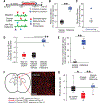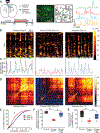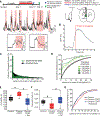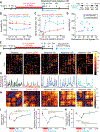Sustained rescue of prefrontal circuit dysfunction by antidepressant-induced spine formation
- PMID: 30975859
- PMCID: PMC6785189
- DOI: 10.1126/science.aat8078
Sustained rescue of prefrontal circuit dysfunction by antidepressant-induced spine formation
Abstract
The neurobiological mechanisms underlying the induction and remission of depressive episodes over time are not well understood. Through repeated longitudinal imaging of medial prefrontal microcircuits in the living brain, we found that prefrontal spinogenesis plays a critical role in sustaining specific antidepressant behavioral effects and maintaining long-term behavioral remission. Depression-related behavior was associated with targeted, branch-specific elimination of postsynaptic dendritic spines on prefrontal projection neurons. Antidepressant-dose ketamine reversed these effects by selectively rescuing eliminated spines and restoring coordinated activity in multicellular ensembles that predict motivated escape behavior. Prefrontal spinogenesis was required for the long-term maintenance of antidepressant effects on motivated escape behavior but not for their initial induction.
Copyright © 2019 The Authors, some rights reserved; exclusive licensee American Association for the Advancement of Science. No claim to original U.S. Government Works.
Figures






Comment in
-
Do antidepressants restore lost synapses?Science. 2019 Apr 12;364(6436):129-130. doi: 10.1126/science.aax0719. Science. 2019. PMID: 30975877 No abstract available.
-
Lasting restoration.Nat Rev Neurosci. 2019 Jun;20(6):315. doi: 10.1038/s41583-019-0175-8. Nat Rev Neurosci. 2019. PMID: 31019295 No abstract available.
References
Publication types
MeSH terms
Substances
Grants and funding
LinkOut - more resources
Full Text Sources
Other Literature Sources
Medical

